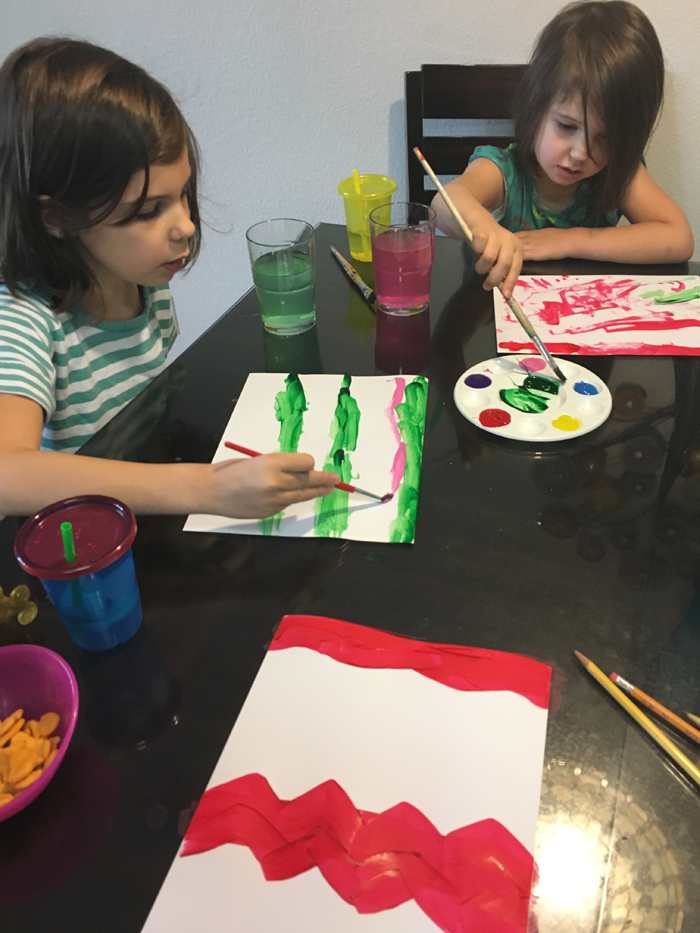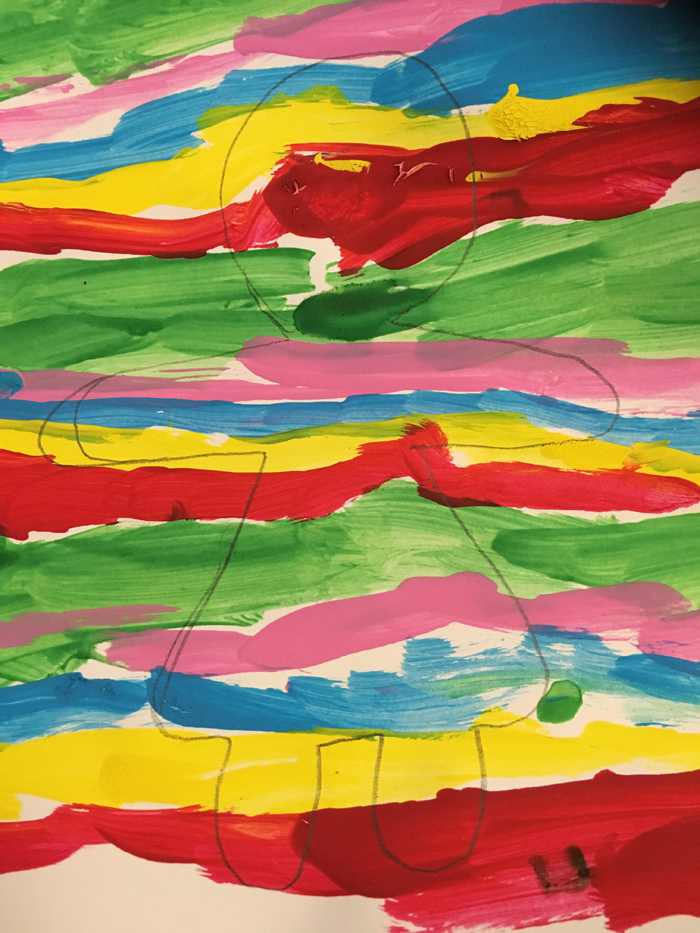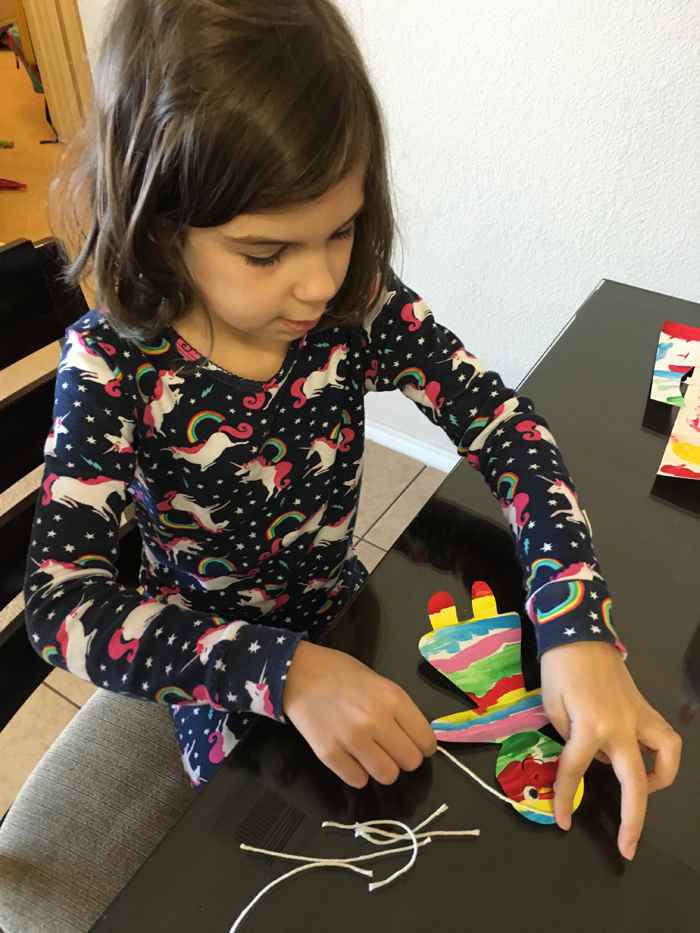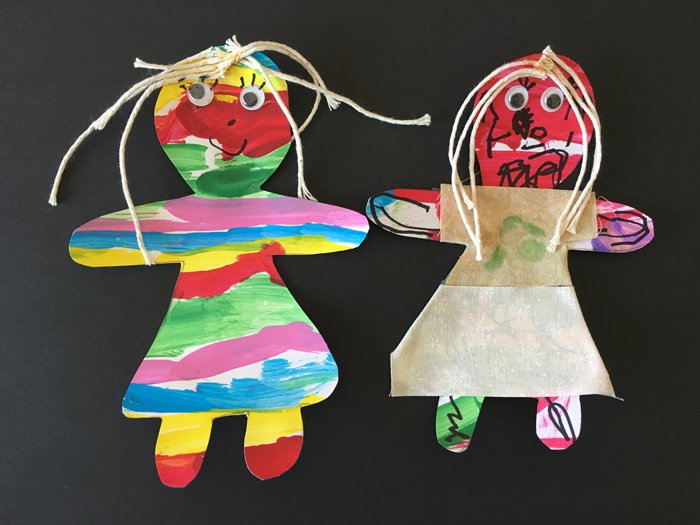Tuesday, December 6, 2016
Thursday, November 10, 2016
Tuesday, November 8, 2016
Monday, November 7, 2016
Saturday, October 22, 2016
Wednesday, October 5, 2016
Saturday, September 17, 2016
Friday, September 2, 2016
Saturday, July 30, 2016
Friday, July 22, 2016
Wednesday, July 20, 2016
Wednesday, July 13, 2016
Saturday, July 2, 2016
Monday, June 27, 2016
Saturday, June 25, 2016
Friday, June 24, 2016
Sunday, June 19, 2016
Wednesday, March 30, 2016
Sunday, March 20, 2016
TEACHING EMOTION IN ART
Teaching emotion in art makes
children more aware and more sensitive to other people’s feelings. They learn
to have pride and integrity about themselves and their own identities. This
helps them to better understand, empathize, and respect the emotions of those
other than themselves. This topic resonates with me because my own personal art
places focus on creating emotional artworks.
I plan to create an art unit on this topic for college students majoring in
elementary school teaching.
So I want to use this 1.0
credit hour to brain storm and come up with articles, videos, lesson
plans and basically research on this topic for my capstone project which I hope
to work on next year to present by next May 2017.What I showed you in the blog
was simply the beginning of brainstorming and researching and
this will be the vehicle in which I will present my findings to you by the
end of the semester.
Teaching emotion in art makes
children more aware and more sensitive to other people’s feelings. They learn
to have pride and integrity about themselves and their own identities. This
helps them to better understand, empathize, and respect the emotions of those
other than themselves. This topic resonates with me because my own personal art
places focus on creating emotional artworks.
If emotion was taught in art at a
young age to our young children before they grow into young adults, they might
just might become young adults who are more sensitive to peers feelings and
care a bit more and understand a bit more about different people who do not
always fit in…and there may be less bullying, less teasing and pointing fingers
at outsiders, kids who just don’t fit in and maybe we can even go further to
say teaching emotion in art to the young can change lives.
I plan to create an art unit on this topic for college students majoring in elementary school teaching.
Hi Gary,
So I want to use this 1.0
credit hour to brain storm and come up with articles, videos, lesson
plans and basically research on this topic for my capstone project which I hope
to work on next year to present by next May 2017.What I showed you in the blog
was simply the beginning of brainstorming and researching and
this will be the vehicle in which I will present my findings to you by the
end of the semester.
Saturday, March 19, 2016
Friday, March 18, 2016
Pictured: Edvard Munch – The Scream. A modernist movement originating in Germany, Expressionism sought to convey meaning or emotional experience rather than physical reality. A typical trait of Expressionism is to present the world solely from a subjective perspective, distorting it radically for emotional effect and to evoke moods or ideas.
Thursday, March 17, 2016
WORRY DOLLS
This post contains affiliate links which help support The Art Curator for Kids. Thank you!
 "I recently went to the library and checked out just about every book on anxiety and came across a gem called Silly Billy by Anthony Brown. The story is about a boy who worries a lot at night until his grandmother introduces him to worry dolls which he can tell his worries to to make his worries go away.
"I recently went to the library and checked out just about every book on anxiety and came across a gem called Silly Billy by Anthony Brown. The story is about a boy who worries a lot at night until his grandmother introduces him to worry dolls which he can tell his worries to to make his worries go away.
This book was perfect for my 6 year old. We had an illuminating discussion about our worries after we read it, and she shared with me stories from night that she had never told me (like when Grandma and Grandpa stayed the night, and she thought she saw Grandpa’s hat moving by itself at night!).
I highly recommend the book with one caveat. The title! It is not SILLY to worry. That annoys me. I want my daughter to feel okay about her worries and feel heard and not feel like she is silly for worrying! I downplayed the title a lot when I read it to my girls.
The book even has a nice snippet of information about the history and cultural use of worry dolls."
Guatemalan Worry Dolls
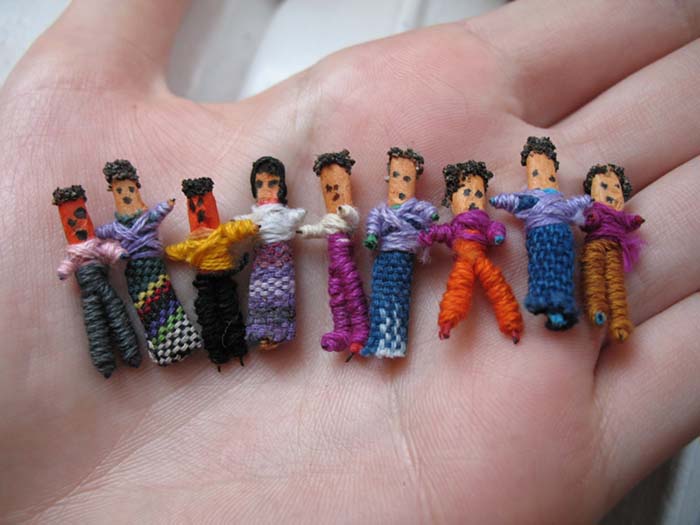
Worry dolls are also called trouble dolls and originate from Guatemala. You tell your worry to the doll and put it under your pillow. The worry doll takes the worry from you and helps you sleep more peacefully.
 When I was younger, I had a set of worry dolls that I used to put under my pillow, and I loved them. They were so cute, and it gave me some comfort to tell my worries to them even though I never believed they actually would take away my worries.
When I was younger, I had a set of worry dolls that I used to put under my pillow, and I loved them. They were so cute, and it gave me some comfort to tell my worries to them even though I never believed they actually would take away my worries.
 When I was younger, I had a set of worry dolls that I used to put under my pillow, and I loved them. They were so cute, and it gave me some comfort to tell my worries to them even though I never believed they actually would take away my worries.
When I was younger, I had a set of worry dolls that I used to put under my pillow, and I loved them. They were so cute, and it gave me some comfort to tell my worries to them even though I never believed they actually would take away my worries.
You can buy worry dolls on Amazon for cheap! I’m planning on getting some for my daughter to see if she wants to use them at night to make her feel better.
Worry Dolls Lesson and Project
Book and Discussion
After we read and discussed the book, I shared with the girls pictures of real worry dolls and talked about how they were made. We also found Guatemala on the globe and discussed the history of worry dolls a little bit.
Patterns Lesson
On the last page of the book, there are lots of pictures of worry dolls. I asked the girls to describe them. We talked about the bright colors, varied lines, and the patterns used on the worry dolls. Then, we each painted a pattern of our choosing on a piece of 8.5×11″ card stock.
Make a Worry Doll
After we made the patterns, I drew a worry doll shape and cut it out. I would normally let my daughter do her own, but I took the easy way out this time. (I know, I know.)
The girls then added googly eyes and used sharpies to draw on the face. My 3yo then drew letters all over hers, because she loves writing letters.
They each glued on strings with simple white glue for the hair. My 6yo could do this on her own, but my 3yo needed some help.
After they were done, we picked some fabric from Nana’s stash of fabric scraps to make clothes! My 6yo didn’t want to cover up her pattern so she ended up choosing not to clothe it. My 3yo gave her a nice beige shirt and skirt.
Overall, this was very a helpful lesson for my family. Since we made the dolls, we’ve used them to talk about emotions and worries, and this has opened up a deeper conversation with my anxious child about her fears.
Wednesday, March 16, 2016
Tuesday, March 15, 2016
Sunday, March 13, 2016
Saturday, March 12, 2016
Friday, March 11, 2016
Tuesday, March 8, 2016
Thursday, March 3, 2016
Thursday, February 25, 2016
Wednesday, February 24, 2016
INSIDE OUT - TEACHING CHILDREN ABOUT EMOTIONS
https://www.youtube.com/watch?v=6x4lp2X214Y
INSIDE OUT - TEACHING
CHILDREN ABOUT EMOTIONSthis article is about the movie INSIDE OUT.
"Last weekend, my children and I went to see the new Disney/Pixar
movie Inside
Out and it quickly
became my most favorite family movie ever! Putting aside for a moment that Inside Out is a
theme park attraction waiting to happen and that I possibly laughed at the
dream sequence more than my kids, it's message is one that resonated strongly
with me as a parent and teacher - that without sadness, there is no joy."
Inside Out follows
the story of 11 year old Riley as she and her family move house from one side
of the US to the other and we are given a front row seat to the inside
mechanisms of her brain as she deals with this milestone event. We are
introduced to Joy, Sadness, Fear, Disgust and Anger who are in
HQ directing Riley just as they are all of us (even dogs and cats). At the
start of the movie, everyone sees Joy as the star in Riley's production which
reminded me of many conversations I have had with parents over the last few
years as an educator. As adults, we spend very few days being happy all day
long. We know that we can experience many emotions in a
day but sometimes expect our children to be different.
Consequently, many young
children do not
recognize that experiencing different emotions is both normal and healthy. Disney/Pixar have done
an excellent job in creating characters young children can identify with and
understand. Whilst we may want to shield our children from the worst life can
throw at us, they do need to see us showing our emotions and most importantly,
how we cope and regulate them. We need our children to see how resilient we are,
that life is a balance, that without sadness, there can be no joy.
Of course trying to learn how to regulate your emotions can be
hard work the younger you are. Add in long days at
school, negotiating with peers, not enough sleep or not enough of the
right foods, and the job of self-regulating
emotions gets
harder still. As a parent of three, I've been there. It's not easy but I can
see this movie and its characters being a powerful tool that can be used to
help children navigate their way through those difficult moments. Their most powerful emotions now
have a face, a colour and even a name!
Case in point, it's nearing the end of second term here in
Australia and after a long day at school, my six year old was not impressed by
the actions of her two older sisters. Her face told the world she was losing
the fight and Anger was about to win. Fresh from watching Inside Out, I simply asked her who
was driving? Who had control of the console in HQ right now inside her head?
She stopped, looked at me and then very slowly started to smile. Anger had been
push out of the way for now but we were able to talk about how she felt when
Anger was in control - that she felt herself getting hot like when he burnt a
hole in the window, that her eyes felt 'all squinty' and that her breathing was
hard. We also talked about what she can do to change that. When she's home, she
likes to go and jump on the trampoline by herself whereas one of her sisters
likes some time to herself in her room where she'll sit and read for a while.
As a classroom teacher of young children, I think having a set of these
characters from Inside
Out in the
classroom will prove to be a useful tool as students would have a visual prompt
for them to be able to help explain their feelings. Or have some of these free Inside Out colouring in pages available for them to use while they calm down and regain
control of their emotions.
Tuesday, February 23, 2016
Creatively Teaching
Multicultural Art
Text and photography
by Marvin Bartel , Ed.D., Professor of Art and Art Education ,Goshen College Other essays in Art Education by this author can be found at this link.
Can I teach art in a ways that makes my students take pride in their own
cultural identity while gaining respect and appreciation for the art of other
cultures? Those teaching in international schools are likely to have
students with more diversity or at least more understanding of cultural
diversity than an art teacher in a national school.In North America, I
frequently see school displays of projects based on tribal art of Native
American Tribes. Some of these are dolls that are felt to have magic
powers in their traditional settings. Some are totem pole projects that
are copies of Native American Totems.OWNERSHIP ISSUESIs it right to imitate
what might be sacred or at least traditional in another culture? How do I
teach art in a way that makes my students take pride in their own culture while
gaining respect and appreciation for the art and customs of other
cultures? Is imitation really flattery? Might there be more
authentic ways to be creative while developing appreciation for the art forms
and artworks of another culture? What does imitation teach about the role of
artists? What should be the role of artists in today’s world? What
is critical thinking in art? Shouldn’t we teach that artists interpret
and create meaning rather than copy that which is already created?WHAT ARE THE
UNDERLYING CONCEPTS?May I suggest some ideas
about how we might teach about multicultural attitudes while teaching art with
integrity? As a teacher, I must first familiarize myself with the
intention of the “other” artist. In the case of the Northwest Native
American Totem Pole maker, I must understand the role of the Totem pole as an
identity symbol for the family or tribe that it represents. I must have
some appreciation for the Totem’s cultural role in helping tell the spiritual
stories of the tribe’s interdependence on nature, animals, and their deep
respect for their ancestors. If I know the artist’s intentions, I have
prepared myself to motivate my students to create art based on similar
intentions related to the culture of the students in my class.Many art lesson are started
by the teacher employing what is called image flooding. In image flooding
the teacher shows many examples of completed work by artists and former
students. I do not think much of image flooding because it works by
giving many answers to the problem before the students have even considered the
problem or worked at their own solution finding skills. Image flooding
results in skillfully produced imitations, but does not teach much about
problem finding and problem solving. Teachers who depend on image flooding
may pride themselves on achieving skillfully slick student artwork, but I
wonder whether students are learning how their art can create visual meaning
and feeling in response to their own lives.USING WHAT WE OWN
In the approach I am suggesting, we might begin the lesson with some
self-reflection. Who are we? Students individually list things
important to their identities. Lists are not only words. Lists can be
made with small sketches. Several groups made up of students with common
interests might be formed in the class. The groups brainstorm and add
things to theirs lists and sketches. They emphasize things that they can
agree to represent themselves, “Who We Are and What We Like.”
SPEICIFIC
IDEAS
Youth culture has lots of popular arts, sports, pets,
hobbies, music interests, brand names, clothing, hair styles, jewelry, foods,
makeup, heroes, and so on that they can list. In some schools they might be
encouraged to articulate values and beliefs. A particular classroom
might have a very nationalistic group and a very international group.
As a high school student, my social studies teacher encouraged me to be in a
group to take a world government position against another group that took an
isolationist position. We learned the arguments for each
position. We didn’t create a sculptural assemblage or a collage, but if
it were an art project these would be logical outcomes.
Click the image for
a larger view of it.
|
CREATIVE COLLABORATION
For the art projects each group could work together to develop an assembled sculpture that would represent the important aspects of their particular set of interests, values, or beliefs. Media might be heavy paper or card stock that is cut, folded, and glued into three dimensional forms to represent the symbols. Their colors, sizes, textures, shapes and their juxtapositions would help produce dominance and subordination of various inclusions. Artistically and aesthetically they should strive for unity with interesting variety.DEVELOP CRITICAL THINKING AND CREATIVITY I admire art teachers who discourage trite cliché symbols. These teachers do not give suggestions or answers when students are having problems. These teachers use questions that move students to invent experimental and expressive ideas. These teachers are pleased with a variety of unexpected outcomes. These teachers help students become independent critical thinkers, problem solvers, and self-assessors. When teachers make suggestions and answer student questions they may be teaching students to become dependent on “experts.” Students do not find the joy of thinking, researching, experimenting, and solving problems for themselves. When the groups complete the artworks, they could be given a writing guide and asked to write a statement or viewer’s guide articulating the work’s intentions. Other class members should be asked to respond without seeing the statement to point out what they first notice and explain why they notice it.CULTURAL AND HISTORICAL CONNECTIONS Finally, near the end of the unit, the teacher should feel free to provide a lesson about Totem Poles. Think of it as image flooding at last. Students should now be able to respond to the teacher’s questions about the possible meanings of Totems within Native American culture. They will have a better appreciation for the how the artist must have struggled to decide on each part of the project. Better yet, a group of students does research. They then write and present a drama they have written about being members of the culture. Their roles include art-makers and art-users in the selected culture. Art education research has shown that this method of learning art history and multicultural art is one of the favorites among high school students.
My Story
In 3-5 sentences tell your story,here is mine...Telling a story about me...I took my first art lesson with an adult art class at the age of 7, at The School of The Art Institute of Chicago, over 50 years ago and after winning a $50.00 set of oil paints, that year, for my first still life made with oil paints.I was hooked and have been painting ever since then.It is still my passion and my life.It is who I am and it is what I do.... I know nothing else.My work is informed by literature about women who have suffered a trauma and their journey to heal.My intention is not to illustrate these stories rather to paint my emotional response to them.My works are typically 10' x 5' and emphasize emotive mark making and color.I have been nicknamed"Kandinsky"whilst working on a PHD in art in Australia.I leave you with this thought..Robert Frost said his poems must "begin with a lump in his throat"my art embraces this attitude.What is your story?Now let us paint our stories.
·
Mark
Rothko: Color + Emotion
How delicious are the colors and compositions of these Mark
Rothko inspired chalk pastel drawings!?
To introduce the links between color and emotions, we read the story
"My Many Colored Days" by Dr. Seuss". We then made a mental list
of all the emotions we had felt during the day (tired when we woke up, excited
to be at school, happy hamburgers were for lunch, and so on). Whatever color we
felt we drew.
Our next step was
to talk about artists who use color to influence emotional responses from
a viewer. Enter...Mark Rothko!
Using chalk pastels on black construction paper we mixed and blended our Rothko
inspired works. WOW! I'm still getting goose bumps, they turned out so
stunning! I'm so proud!
Sunday, February 21, 2016
QUESTIONS TO ANSWER FOR GARY
What are you planning to do with the lesson? Using it to teach my own class
Are you planning on using this for your class?Yes
Also how is emotion connected to learning? ...........
More of an FYI for lesson plans. Lesson plan need to have objectives listed.
What are the students learning from this lesson?
What skills are they gaining?
How is learning/skills connected to the state or national art standands?
How are you going to assess they learned what you state they will learn?
Remember your final project is a culmination of what you have learned in the program. This is another reason an exhibition is problematic for you. You have not taken any studio courses with us. Pull from what you have learned in your classes here at tech.
For your 6 credits face to face are you planning on taking studio or seminar since you have studio credits transferred from your MFA?Seminars
Gary
Friday, February 19, 2016
EMOTION PAINTING
EMOTION PAINTING
Level: Primary and up
Grades: K and up | Age: 5yrs and up | Written by: Andrea Mulder-Slater
[Andrea is one of the creators of KinderArt.com]
Grades: K and up | Age: 5yrs and up | Written by: Andrea Mulder-Slater
[Andrea is one of the creators of KinderArt.com]
Summary:
Students
will gain an understanding of how much of a role emotion plays in art making as
they create paintings based on feelings.
Vocabulary:
image, feeling, emotion, idea, expression, color, texture, line,
imagine, create, change, evolve, happy, sad, angry, excited, alone, bright,
dull, acrylic, tempera, experience, share, design
What You Need:
What You Need:
·
a large sheet of heavy paper (or canvas)
·
acrylic paint (for older students)
·
tempera paint - or crayons (for younger students)
·
paintbrushes
·
water
·
containers
·
mixing trays (could be styrofoam trays or sheets of old
cardboard)
·
paper towels
·
newspapers
·
old shirts or painting smocks
·
music (various styles)
·
scrap newsprint
·
pencils
What You Do:
- Talk about
emotion. What does the word emotion mean? What kinds of emotions do we
experience on a day-to-day basis?
- Talk about
color. How do certain colors make us feel? Why?
- Talk about line.
What kinds of lines are there? Straight, jagged, squiggly, zig-zag, etc.
- Warm up by
having students draw lines (using pencil on newsprint) based upon certain
feelings. IE: draw happy lines, draw angry lines, etc.
- You can also
encourage your students to draw lines based on the music they are hearing
(IE: jazz, classical, pop etc.)
- Once everyone is
"warmed up" begin working with the paint. Make sure each student
has a paintbrush, water and access to at least the three primary colors
(red, yellow and blue).
- Give a quick
demonstration of how paints are used properly (always clean brushes before
dipping into a new fresh color ... treat the brushes well by not squishing
them down on the paper etc. Also, review color mixing (yellow + blue =
green; red + yellow = orange; red + blue = violet)
- Everyone can
then decide on an emotion or feeling which they will express using various
paint colors, lines, textures and shapes.
- Allow your
kinderartists to take as long as they need to create the final work,
encouraging them to stand back from time to time to have a really good
look at what they are doing. Is it moving in the direction they want it
to? Are the desired feelings starting to emerge?
- Remember too
that this is a very intuitive and subjective exercise and as such the
works should not be analyzed by the instructor, but rather by the
kinderartists themselves.
- When the
paintings are complete, hang them up and see how others interpret the
work. Does everyone see similar emotions in the same works? Yes? No? Why?
Refer to How to Look at Art.
Curriculum Connections:
History: Look at the works of various artists
throughout time. While looking at the works, see if you can pick out any strong
emotional feelings.
Language Arts: Write an emotion story or poem to go along with your painting.
Music: Look at rhythm and movement in music and compare the idea of "emotional music" with "emotional painting".
Language Arts: Write an emotion story or poem to go along with your painting.
Music: Look at rhythm and movement in music and compare the idea of "emotional music" with "emotional painting".
Recommended
Books/Products:
My First Paint Book
by Dawn Sirett
Twenty-two activities, from stenciled boxes to T-shirt designs, are presented along with step-by-step, full-color photographs and clear instructions, in a visual introduction to making and decorating things with paint.
by Dawn Sirett
Twenty-two activities, from stenciled boxes to T-shirt designs, are presented along with step-by-step, full-color photographs and clear instructions, in a visual introduction to making and decorating things with paint.
Subscribe to:
Comments (Atom)





